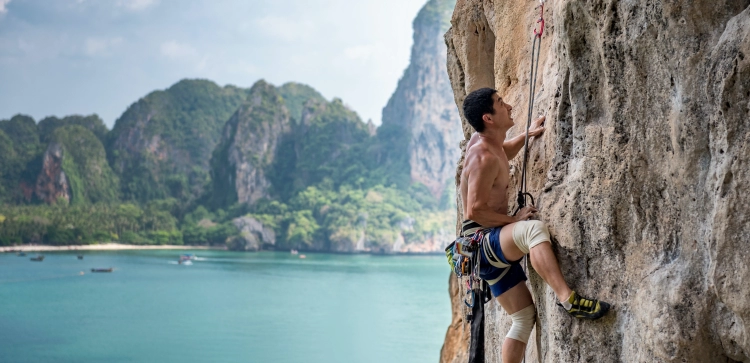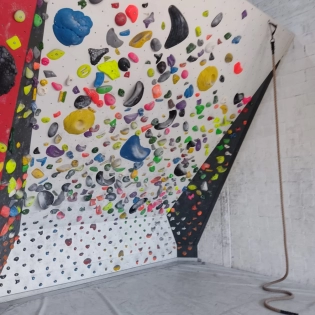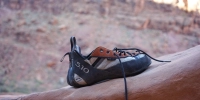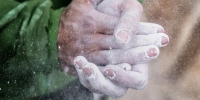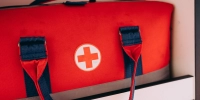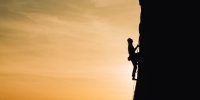Advanced Climbing Techniques: Mastering Movement & Precision

As climbers progress beyond foundational skills, the journey into advanced techniques becomes a fascinating exploration of efficiency, control, and mental fortitude. Advanced climbing is less about brute force and more about the art of movement – executing deliberate, fluid actions that minimize wasted energy and maximize precision on the wall. This guide delves into the core principles of advanced climbing, focusing on critical elements like body tension, accuracy in dynamic moves, and specialized techniques that enable climbers to unlock new levels of performance on challenging routes.
- The Essence Of Advanced Climbing
- Mastering Body Tension: Navigating Intricate Sequences With Precision
- Improving Accuracy In Dynamic Climbing Moves
- The Importance Of Precision In Dynamic Movement
- Techniques To Enhance Accuracy In Dynamic Moves
- Practical Accuracy Drills
- Specialized Advanced Climbing Techniques
- The Mental Game In Advanced Climbing
- Conclusion
- FAQ: Your Common Questions On Advanced Climbing Techniques
- What Defines An Advanced Climbing Technique?
- Why Is Body Tension So Important In Advanced Climbing?
- How Can I Improve My Body Tension For Climbing?
- What Is A Dynamic Climbing Move?
- How Can I Improve My Accuracy In Dynamic Moves?
- What Are Some Examples Of Specialized Advanced Climbing Techniques?
- How Does Mental Resilience Contribute To Advanced Climbing?
- Should Beginners Focus On Advanced Climbing Techniques?
The Essence of Advanced Climbing
Advanced climbing techniques differentiate themselves by prioritizing efficiency in movement and meticulous energy expenditure. Proficient climbers exhibit remarkable fluidity and control, making precise movements and effortlessly adjusting their positioning to adapt to complex situations. Beyond physical prowess, mental resilience is paramount, enabling climbers to tackle demanding routes with unwavering focus and determination, managing fear, and adapting to unforeseen challenges.
Mastering Body Tension: Navigating Intricate Sequences with Precision
Body tension is a cornerstone of advanced climbing, providing the fundamental stability and control necessary to navigate intricate sequences and maintain contact with the wall, particularly on steep or less featured terrain. It's the ability to keep your entire body "tight" and engaged, linking your hands and feet through your core.
Why Body Tension Matters
-
Foundation of Stability: A strong sense of body tension creates a rigid platform, allowing for precise and controlled movements even when holds are poor or far apart.
-
Efficient Weight Distribution: It helps distribute your weight effectively across all four points of contact (hands and feet), reducing excessive strain on individual muscles and improving balance.
-
Power Transfer: Effective tension ensures that the power generated from your legs and core efficiently translates to your hands, enabling stronger pulls and pushes.
-
Control in Movement: It prevents uncontrolled swinging or "barn-dooring," allowing for smooth transitions between holds.
Techniques for Improving Body Tension
-
Core Engagement is Fundamental: The core is the engine of body tension. Strengthening your deep core muscles (transverse abdominis, obliques, pelvic floor) through targeted exercises is essential for overall body control. Think about pulling your belly button towards your spine and bracing your entire midsection.
-
Efficient Weight Distribution: Consciously distribute your weight across your points of contact. Use your feet actively to push, reducing the load on your arms. This involves learning to "flag" or "drop-knee" to maintain balance and tension.
-
Utilizing Opposing Forces (Counter-Pressure): A key concept in body tension. By actively pushing and pulling in opposing directions (e.g., pulling with one hand while pushing with the opposite foot, or squeezing a hold), you create internal tension that locks your body into place.
-
Precision Footwork: Active and precise footwork directly contributes to body tension. Slipping feet instantly breaks tension. Focus on using the smallest, most effective footholds and maintaining constant pressure through your feet.
-
Gradual Weight Transfer: Rather than jerky movements, transfer your weight gradually and smoothly between holds. This controlled transition helps maintain tension throughout the sequence.
-
Controlled Breathing: Managing your breath helps to manage anxiety during intricate sequences and allows for consistent core engagement. Don't hold your breath; instead, use controlled exhales on exertion.
Specific Body Tension Exercises
To build the foundational strength for better body tension, incorporate these exercises into your training:
-
Planks (and variations): Forearm plank, side plank, plank with leg lifts.
-
Hollow Body Holds: Lying on your back, lift your head, shoulders, and legs slightly off the ground, engaging your core.
-
Leg Raises/Hanging Leg Lifts: Excellent for lower abdominal and hip flexor strength, crucial for maintaining tension on overhangs.
-
L-sits: Requires significant core and hip flexor strength to hold legs straight out in front.
-
Front Lever/Back Lever Progressions: Advanced exercises that build immense full-body tension.
Improving Accuracy in Dynamic Climbing Moves
Dynamic climbing moves, often referred to as "dynos" or "deadpoints," involve rapidly moving from one set of holds to another without maintaining continuous contact, requiring a combination of strength, technique, and exceptional precision. Mastering these moves is crucial for pushing grades and navigating sequences where static movement isn't possible.
The Importance of Precision in Dynamic Movement
-
Hitting the Target: The core of a dynamic move is to accurately hit the target hold. This requires precise trajectory, speed, and body position.
-
Energy Conservation: A precise dynamic move minimizes wasted energy from overshooting or missing, allowing you to execute successive moves more efficiently.
-
Flow and Confidence: Accurate dynamic moves contribute to the overall fluidity of your climbing and significantly boost confidence on complex routes.
Techniques to Enhance Accuracy in Dynamic Moves
-
Visualization and Rehearsal: Before initiating a dynamic move, thoroughly visualize the sequence in your mind. Imagine the exact trajectory, where your hand will land, and how your body will follow. Mental rehearsal primes your body for the movement.
-
Controlled Momentum, Not Wild Flailing: The goal is not just to throw yourself. It's about generating just enough momentum in the right direction. Over-shooting or under-shooting often comes from uncontrolled power.
-
Spotting the Target Hold: Keep your eyes fixed on the target hold throughout the entire dynamic movement. Your body will naturally follow your gaze.
-
Build Foundational Strength: A strong core is paramount for controlled body positioning during dynamic sequences, allowing for accurate reaches and stable landings. Develop explosive power in your legs and hips.
-
Analyzing Failed Attempts: Every failed attempt is a learning opportunity. Analyze what went wrong: Did you launch too hard/soft? Was your body position off? Did you miss the hold? Use this feedback to refine your next attempt.
-
Vary Dynamic Move Types: Practice different types of dynamic moves – dynos (leaving all holds), deadpoints (brief moment of weightlessness before latching a hold), and lunges (extending one arm or leg to a hold). This enhances adaptability.
Practical Accuracy Drills
-
Target Practice: On a wall, pick two starting holds and a single, small target hold. Practice hitting the target hold repeatedly from the same start, focusing purely on accuracy.
-
Repeatable Dynos/Deadpoints: Find a simple dynamic problem you can almost do, and practice it repeatedly. Focus on refining the exact amount of power and body swing needed.
-
Adding Complexity: Once consistent, add slight variations: change foot positions, try to minimize sound on landing, or use slightly worse starting holds.
Specialized Advanced Climbing Techniques
Advanced climbing encompasses a range of specialized skills beyond fundamental movements, tailored to specific rock features and climbing styles.
Crack Climbing Techniques
Crack climbing involves ascending cracks of varying widths by jamming body parts into them to create friction and leverage.
-
Hand Jamming: Inserting your hand into a crack and expanding it to create friction. Different crack widths require different hand positions (fist jam, cupped hand jam, stack hand jam).
-
Foot Jamming: Similar to hand jamming, placing your foot into a crack and twisting to create friction.
-
Arm Bars/Knee Bars: Using the entire arm or knee/leg to wedge into wider cracks for resting or moving.
Face Climbing Techniques (on slab or vertical walls)
Face climbing relies heavily on precise footwork and subtle balance on minimal features.
-
Smearing: Pressing the sticky rubber sole of your shoe directly onto smooth rock to generate friction, often on features too small to be distinct footholds. This requires trust in your shoes and effective weight transfer.
-
Edging: Using the very edge of your climbing shoe (inside, outside, or toe) on small protrusions or ripples in the rock. Requires precise foot placement and strong foot muscles.
-
Flagging: Extending a leg out to the side or behind another leg to counteract barn-dooring (swinging away from the wall) or to maintain balance without an available foothold.
-
Outside Flag: Placing the outside edge of one foot against the wall or behind the other leg.
-
Inside Flag: Crossing one leg in front of the other and pressing the inside edge against the wall.
-
-
Opposition: Creating opposing forces between your hands and feet or between two limbs to maintain tension and stability, especially on featureless or sloping terrain. This is closely related to overall body tension.
The Mental Game in Advanced Climbing
Mental resilience is as crucial as physical strength for advanced climbers.
-
Unwavering Focus and Determination: Tackling challenging routes requires intense concentration to execute precise movements and maintain body tension.
-
Managing Fear: Overcoming the fear of falling on harder, higher, or more exposed routes is a continuous mental battle. This is where trust in your technique, gear, and spotters (if bouldering) becomes paramount.
-
Adapting to Unforeseen Challenges: Even with thorough route reading, unforeseen issues (e.g., a wet hold, a chipped hold) demand quick problem-solving and adaptability.
-
Problem-Solving: The ability to analyze, visualize, and execute complex sequences is a continuous mental exercise that defines advanced climbing.
Conclusion
Advanced climbing is a captivating blend of refined physical ability and sharp mental acumen. By diligently mastering core elements like comprehensive body tension and pinpoint accuracy in dynamic movements, while also developing specialized techniques for diverse terrains, climbers can elevate their performance to new heights. The journey is one of continuous learning, where each intricate sequence conquered and each challenging movement executed builds not just strength and skill, but also a deeper understanding of movement, balance, and the profound interplay between mind and body on the rock. Embrace the challenge, refine your art, and unlock your full potential in the vertical world.
FAQ: Your Common Questions on Advanced Climbing Techniques
What defines an advanced climbing technique?
Advanced climbing techniques are typically characterized by their emphasis on efficiency, precision, fluidity, and deliberate energy expenditure. They often involve complex body positioning, specific applications of friction, and a high degree of control, minimizing wasted movement on challenging routes.
Why is body tension so important in advanced climbing?
Body tension is critical because it provides overall stability and control, especially on steep or featureless terrain. It allows for efficient weight distribution, links hand and foot movements through the core, and prevents uncontrolled swinging, enabling precise execution of difficult sequences.
How can I improve my body tension for climbing?
Improve body tension by consistently strengthening your core through exercises like planks, hollow body holds, and hanging leg lifts. Focus on active weight distribution, utilizing opposing forces between your limbs, practicing precise footwork, and maintaining controlled breathing during climbs.
What is a dynamic climbing move?
A dynamic climbing move (like a dyno or deadpoint) involves launching rapidly from one hold to another without maintaining continuous contact. It requires explosive power, accurate timing, and precise control to hit the target hold.
How can I improve my accuracy in dynamic moves?
To improve accuracy in dynamic moves, practice visualizing the move before executing it, focus on generating controlled momentum, keep your eyes fixed on the target hold, build strong core and explosive power, and analyze failed attempts to refine your technique. Specific accuracy drills can also help.
What are some examples of specialized advanced climbing techniques?
Specialized techniques include Crack Climbing (using hand and foot jams, arm bars) for cracks, and Face Climbing techniques like smearing (using shoe friction on smooth rock), edging (using shoe edges on small features), and flagging (extending a leg for balance) for slab or vertical walls.
How does mental resilience contribute to advanced climbing?
A: Mental resilience is crucial in advanced climbing for maintaining unwavering focus on challenging routes, managing the fear of falling, and adapting quickly to unexpected situations (like a wet or chipped hold). It allows climbers to push their physical limits with confidence.
Should beginners focus on advanced climbing techniques?
No, beginners should prioritize mastering foundational climbing skills like basic footwork, handholds, and body positioning on easier routes. Focusing on advanced techniques too early can lead to bad habits and increased risk of injury. Advanced techniques are built upon a solid base of fundamental skills.

